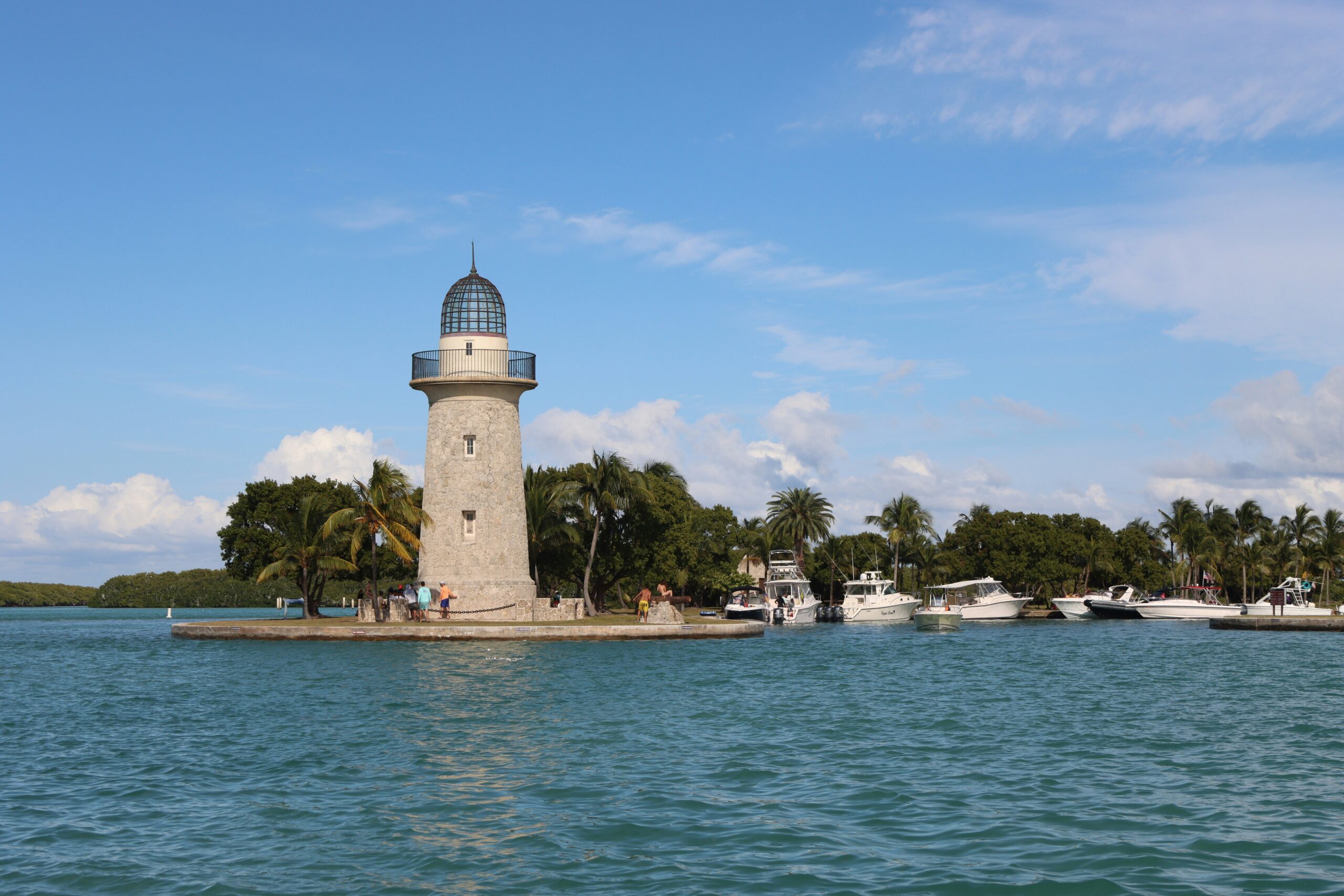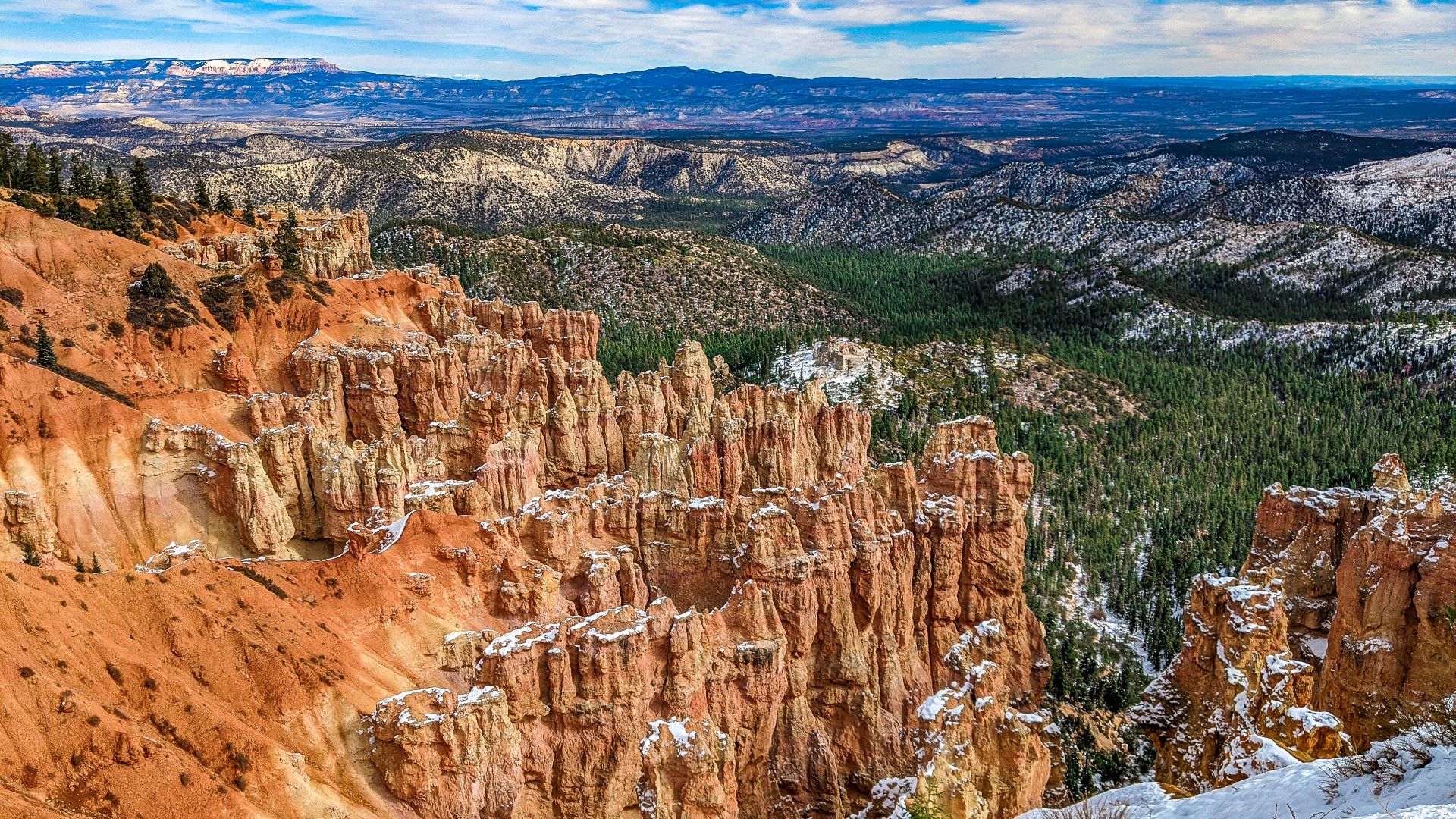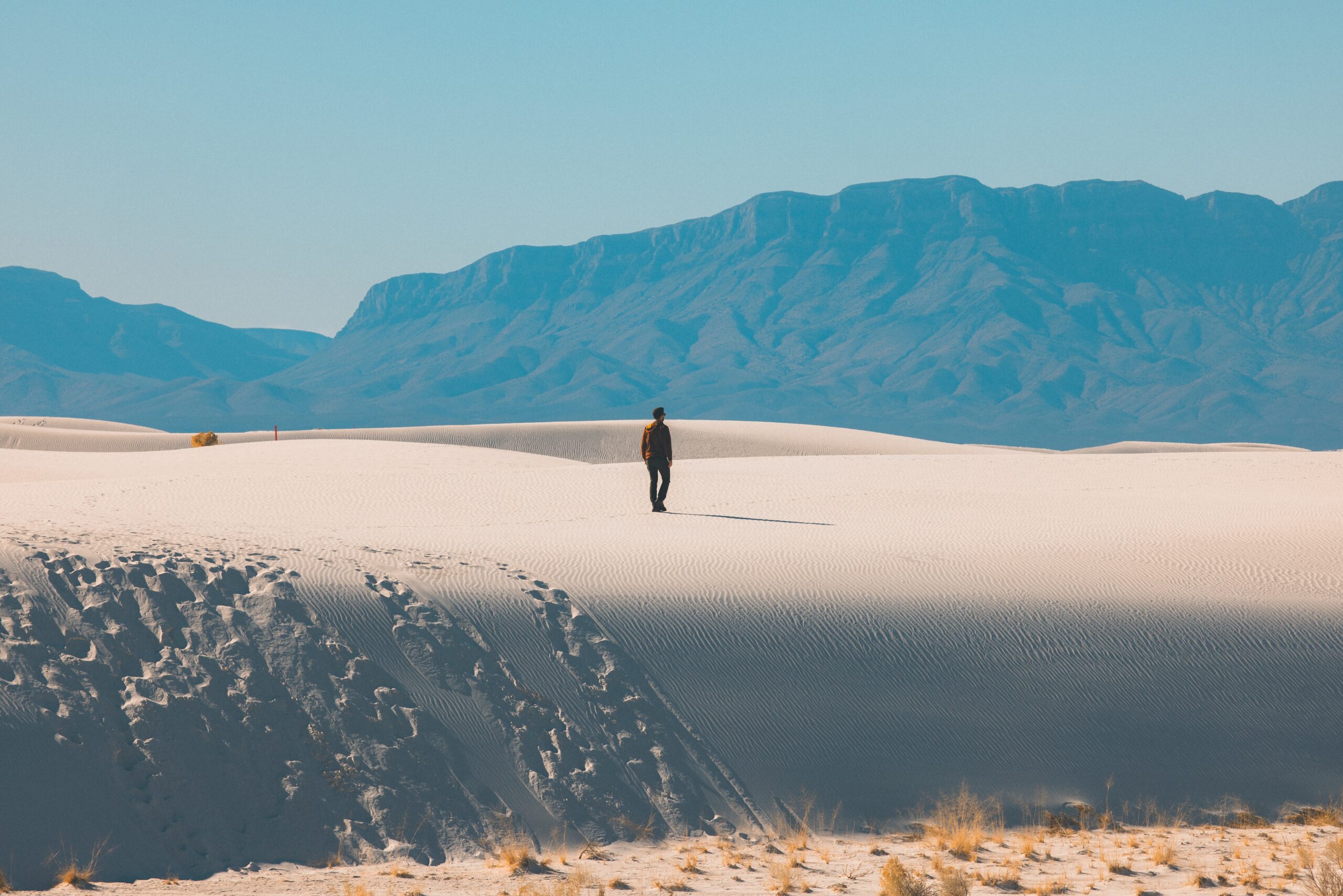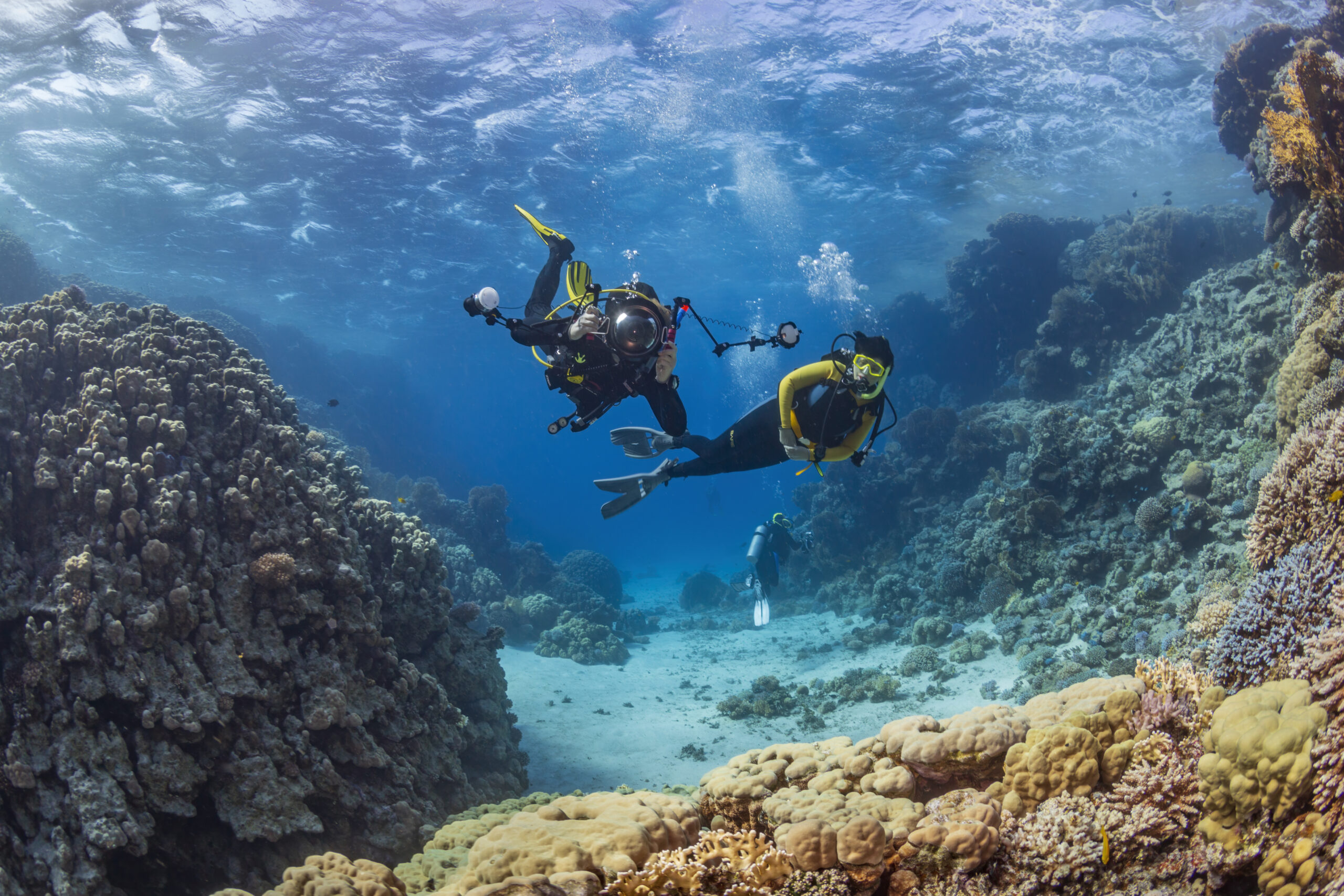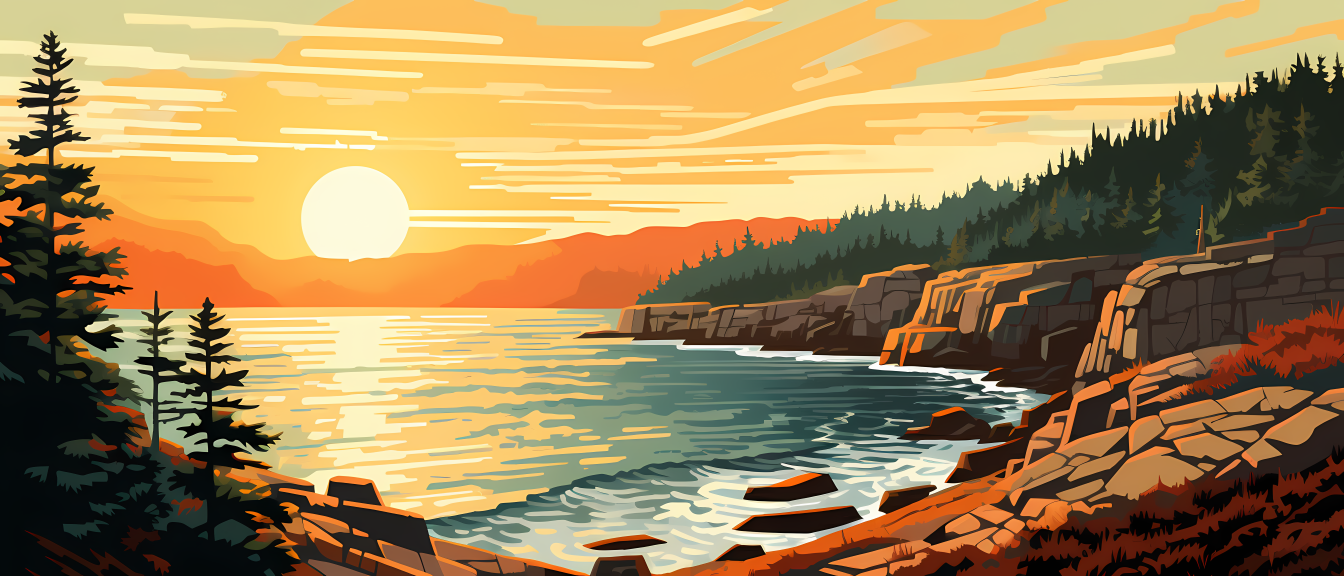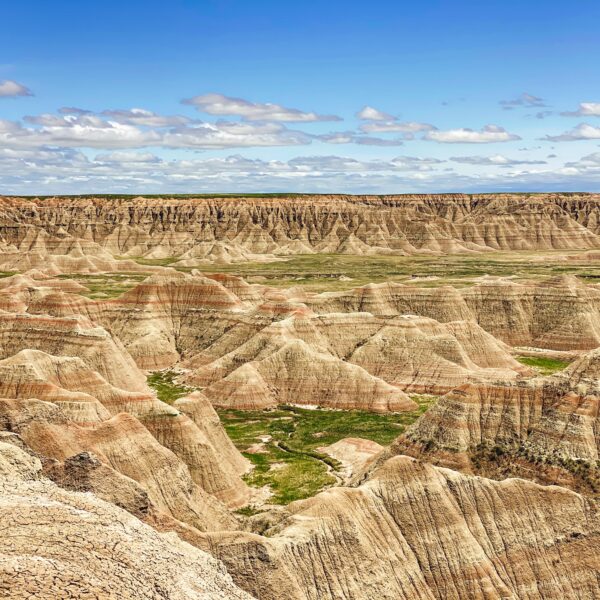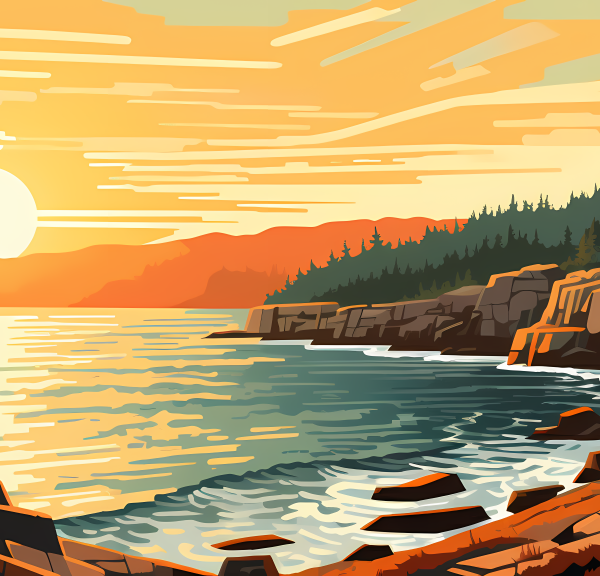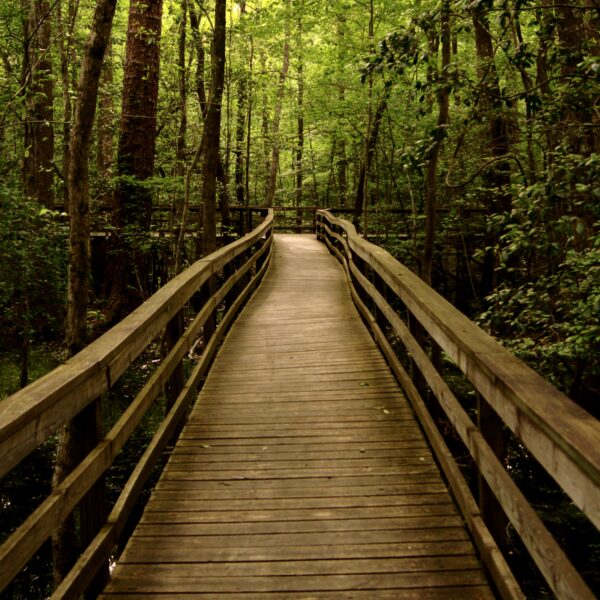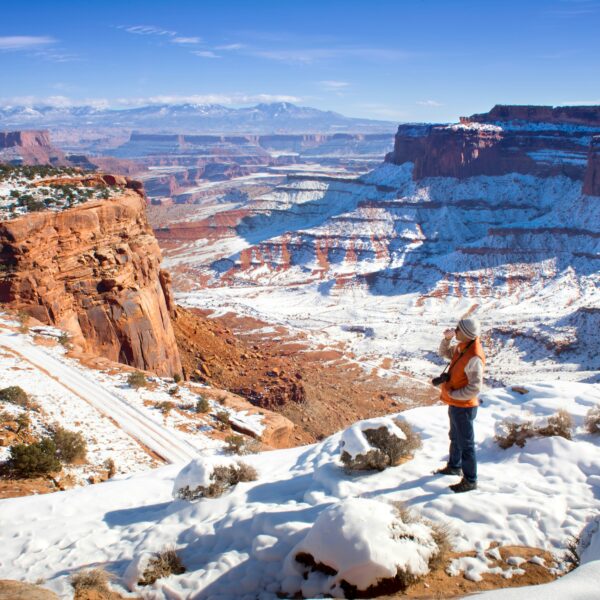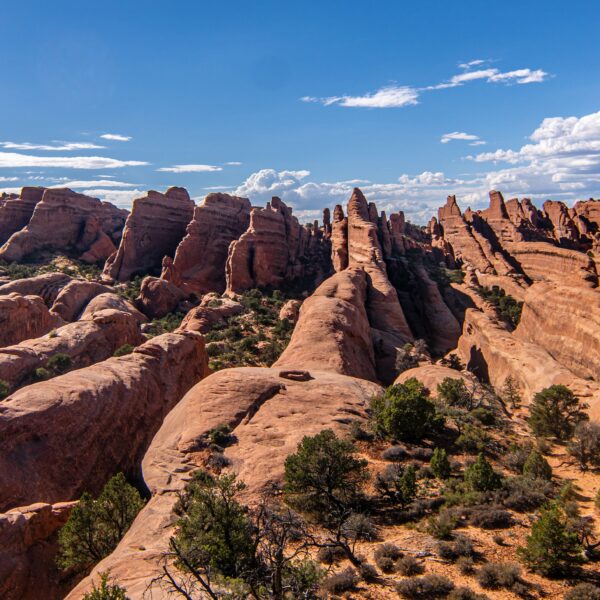In the heart of Colorado’s rugged landscape lies a geological wonder that has captivated the imaginations of all who gaze upon it—the Painted Wall of Black Canyon of the Gunnison National Park. As we embark on this journey of discovery, we’ll delve into the depths of this colossal cliff, exploring its geological origins, its awe-inspiring dimensions, and the cultural significance it holds for both visitors and the region’s indigenous people.
Some posts on this site contain affiliate links, meaning if you book or buy something through one of these links, I may earn a small commission at no extra cost to you.
A Towering Titan of Stone
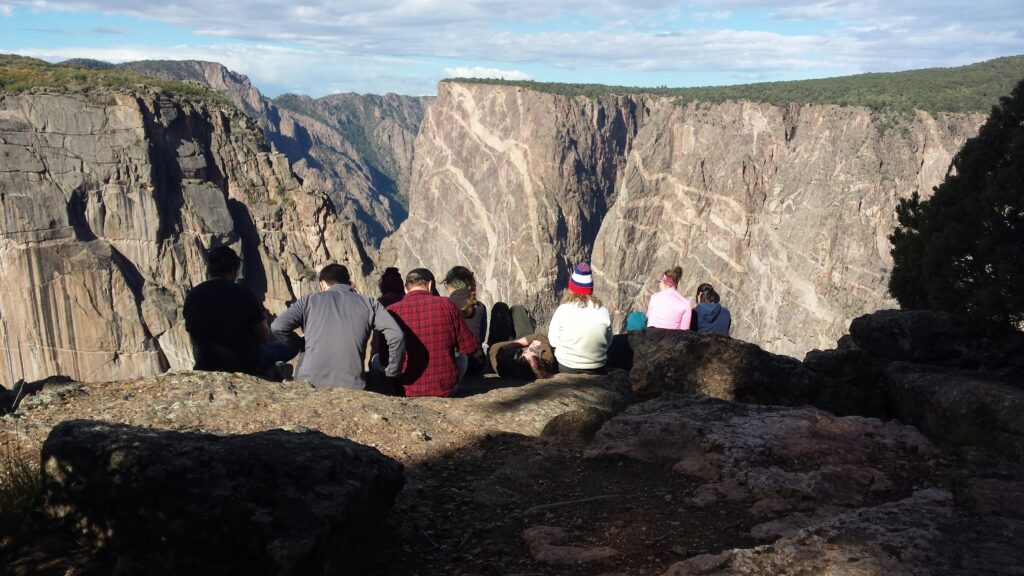
The Painted Wall is not just any cliff; it stands as a testament to the immense power of natural forces that have sculpted this landscape over eons. Rising a staggering 2,250 feet above the Gunnison River, it is not only the tallest cliff in Colorado but one of the tallest sheer cliffs in North America. Its grandeur leaves all who witness it in absolute awe.
The Geological Canvas
The name “Painted Wall” is derived from the striking bands of pink and white streaking down its face, akin to vivid brushstrokes on a canvas. These distinctive colors are the result of different rock layers, each with its unique composition and history. The white streaks are comprised of Precambrian granite, dating back over a billion years, while the pink hues come from pegmatite dikes—a type of igneous rock—that intruded the granite, creating a stunning contrast.
Geological Formation – The Forces at Play
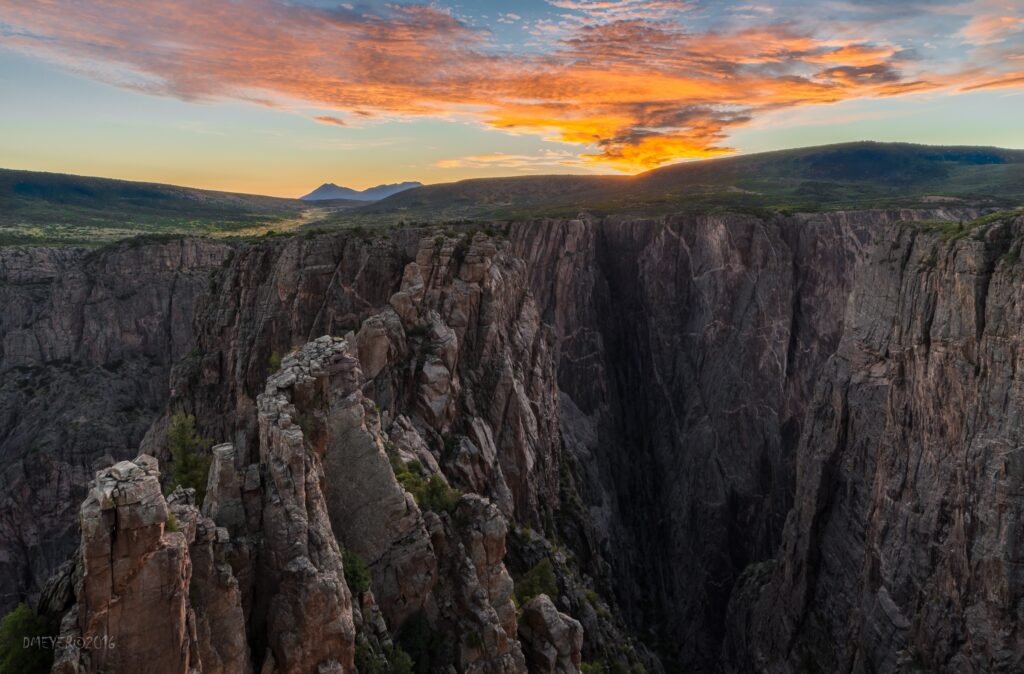
To truly appreciate the magnificence of the Painted Wall, it’s essential to understand the awe-inspiring geological forces that have sculpted this colossal masterpiece over millions of years.
The story begins over two billion years ago when molten rock, in the form of molten granite, intruded the Earth’s crust beneath the region that is now Black Canyon of the Gunnison National Park. As this magma cooled and solidified deep underground, it laid the foundation for what would eventually become the Painted Wall. This ancient granite, with its remarkable endurance, forms the core of the cliff, providing the sheer verticality that defines the Painted Wall.
But the geological drama didn’t stop there. Around 1.7 billion years ago, molten fluids, rich in minerals, were injected into fractures within the granite. Over time, these fluids cooled and crystallized, forming pink-hued pegmatite dikes. These dikes, which are now a striking feature of the Painted Wall, contrast brilliantly with the white granite, creating the vivid palette that inspired its name.
As the geological stage was set, the relentless forces of erosion took the spotlight. The Gunnison River, carving through the hard rock layers, played a pivotal role in exposing the Painted Wall’s towering cliffs. Over two million years, the river’s powerful flow relentlessly wore away the rock, gradually revealing the colossal beauty of the Painted Wall. This erosional masterpiece continues to evolve to this day, a testament to the ever-changing face of our planet.
Cultural Significance – Native Stories and Legends
Beyond its geological grandeur, the Painted Wall of Black Canyon of the Gunnison National Park holds profound cultural significance, steeped in the stories and legends of Native American tribes who have called this region home for centuries.
For the Ute and Apache tribes, the Black Canyon and the Painted Wall are not merely geological wonders but sacred places deeply entwined with their cultural and spiritual identities. These indigenous communities have shared stories that honor the canyon’s immense beauty and respect the forces that shaped it. Legends passed down through generations tell of powerful spirits inhabiting the canyon, and the Painted Wall, with its striking colors, is seen as a manifestation of these spirits’ presence.
In Ute tradition, the Black Canyon is known as “Hahnéou,” which translates to “home of the eagles.” According to their beliefs, the Painted Wall’s soaring height represents the place where eagles carry the spirits of the deceased to the afterlife. This reverence for the canyon and its towering cliffs underscores the profound connection between the Ute people and their ancestral lands.
Similarly, the Apache people have their own sacred narratives associated with the Painted Wall and the Black Canyon. To them, the canyon is a place of spiritual importance, where the forces of creation and transformation are at work. The Painted Wall’s vivid colors are believed to be the result of the struggles and triumphs of supernatural beings. These narratives remind us that the land is not merely a backdrop for human existence; it is a living entity with its own stories to tell.
Today, as visitors stand in awe before the Painted Wall, they become part of an ongoing story—one that bridges the gap between ancient legends and modern appreciation for the canyon’s natural beauty. Understanding the cultural significance of this geological masterpiece enriches the experience, fostering respect for the land and the indigenous communities whose heritage is intertwined with its very existence.
Hiking and Viewing – An Up-Close Encounter
For those eager to witness the Painted Wall up close and personal, several hiking trails within Black Canyon of the Gunnison National Park provide unforgettable encounters with this colossal geological masterpiece. Among them, the North Vista Trail stands out as the primary route to get you within sight of the Painted Wall. This moderately strenuous hike covers roughly three miles round-trip and offers exceptional views of the cliff’s towering face.
As you embark on the North Vista Trail, you’ll journey through a pristine wilderness, surrounded by the diverse flora and fauna of the park. This trail isn’t just about the destination; it’s about the journey itself. Along the way, you’ll be treated to panoramic vistas of the canyon, the Gunnison River below, and, of course, the gradual unveiling of the Painted Wall’s colossal presence.
Expect a well-maintained path that meanders through pinion and juniper woodlands, providing intermittent shade along the way. While the trail is generally considered moderate in difficulty, there are some steep sections and uneven terrain to navigate. Sturdy hiking boots and plenty of water are must-haves for a comfortable trek.
As you approach the Painted Wall, the sense of awe intensifies with every step. Its sheer enormity becomes apparent, and the vibrant colors of the rock layers come into vivid focus. You’ll find several viewpoints along the trail where you can pause, catch your breath, and savor the stunning scenery. Photographers, in particular, will find numerous opportunities to capture the essence of this geological marvel.
The Thrill of the Ascent – Rock Climbing on the Painted Wall
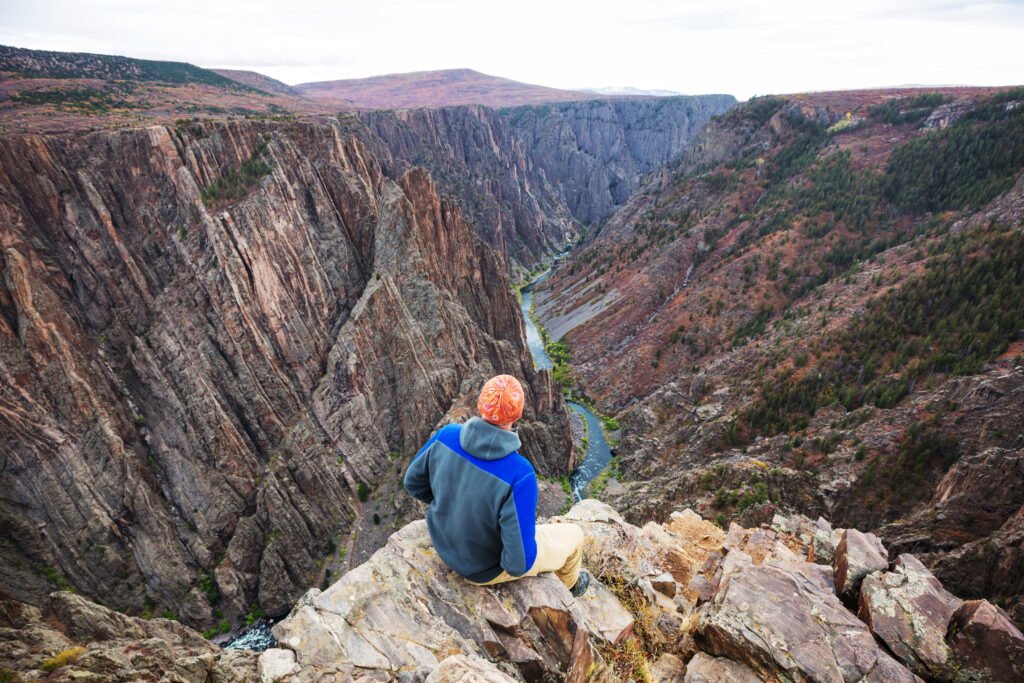
For the adventurous souls seeking to take their encounter with the Painted Wall to new heights, the world of rock climbing beckons. The Painted Wall, with its sheer verticality and colorful rock layers, presents a formidable yet irresistible challenge to climbers from around the globe.
Rock climbing on the Painted Wall is not for the faint of heart. It demands a high level of skill, experience, and a deep appreciation for the raw power of the canyon’s geology. Climbers must be well-prepared, both physically and mentally, as they embark on this exhilarating journey upwards.
One of the most renowned climbing routes on the Painted Wall is the Scenic Cruise, a multi-pitch climbing adventure that ascends over 2,000 vertical feet. As climbers make their way up the cliff face, they are treated to breathtaking views of the Gunnison River below and the canyon’s dramatic surroundings. This route is often regarded as one of Colorado’s classic climbs, a testament to the allure of the Painted Wall for climbing enthusiasts.
Safety is paramount when tackling the Painted Wall. Climbers must be equipped with the appropriate gear, including helmets, harnesses, ropes, and protective devices. Due to the challenging nature of this climb, it is strongly recommended that climbers have prior experience in multi-pitch climbing and a solid understanding of the unique demands of climbing in the Black Canyon.
Climbing the Painted Wall is not only a physical feat but also a deeply immersive experience. As climbers navigate the intricate network of cracks, ledges, and features on the cliff’s face, they become intimately acquainted with the geological intricacies that define this iconic formation. It’s a journey that combines the thrill of adventure with the opportunity to forge a profound connection with the Painted Wall and the Black Canyon’s geological story.
Photography Tips – Capturing the Essence
Photographing the Painted Wall is a dream come true for any nature enthusiast and photographer. To truly capture the essence of this geological masterpiece, consider these photography tips that will help you bring its grandeur to life.
- Golden Hour Magic: Timing is everything in photography, and the Painted Wall looks especially enchanting during the golden hours of sunrise and sunset. The soft, warm light during these times enhances the vibrant colors of the cliff’s rock layers, creating a breathtaking contrast. Arrive early or stay late to witness this magical transformation and capture photos that radiate with the Painted Wall’s natural beauty.
- Wide-Angle Wonder: The Painted Wall is massive, and a wide-angle lens is your best friend when trying to capture its full glory. A wide-angle lens allows you to include more of the landscape, emphasizing the cliff’s scale against the surrounding environment. It also creates dramatic perspectives, adding depth to your shots.
- Tripod Stability: Given the low-light conditions during sunrise and sunset, using a sturdy tripod is essential. It prevents camera shake and allows for long exposure shots that capture every detail of the Painted Wall’s intricate features. Additionally, a tripod enables you to experiment with different angles and compositions.
- Framing and Foreground: Incorporate elements from the park’s surroundings into your shots to add depth and context. Trees, boulders, or the Gunnison River can serve as compelling foreground elements that lead the viewer’s eye toward the Painted Wall. This technique creates a sense of place and scale in your photographs.
- Post-Processing Magic: Post-processing can elevate your Painted Wall photos to another level. Pay attention to color correction, contrast, and saturation to bring out the cliff’s vivid hues. However, maintain a balance – the goal is to enhance the natural beauty, not alter it beyond recognition.
When photographing the Painted Wall, understanding the optimal shot locations and times of day is crucial to ensure your photos do justice to its grandeur. The Painted Wall’s appearance can dramatically change depending on the time of day and where the sun is in the sky. Here are some key locations and recommended times:
For sunrise, consider locations like North Chasm View, South Chasm View, Painted Wall View, Cedar Point, Dragon Point, and Gunnison Point. During sunrise, the warm glow of the morning sun casts a captivating light on the Painted Wall, revealing its vibrant colors and intricate textures.
For a remarkable late afternoon or sunset experience, head to Warner Point, Sunset View, Exclamation Point (north rim, closed in winter), and, if accessible, the Summit of Green Mountain (north rim, closed in winter). As the day winds down, these locations offer breathtaking views of the Painted Wall, with the changing light creating stunning contrasts and hues.
These recommended locations and timings will help you make the most of your photography adventure at the Painted Wall. Keep in mind that creativity knows no bounds, and there are numerous other unexplored spots within the park to exercise your artistic vision. Ultimately, your photography journey is a personal expression of the awe and wonder that the Painted Wall inspires.
Conservation Efforts – Preserving a Natural Wonder
Preservation is paramount when it comes to a geological wonder like the Painted Wall. Black Canyon of the Gunnison National Park has dedicated efforts to conserve this natural treasure, ensuring that future generations can continue to marvel at its breathtaking beauty.
Suggested Books for Black Canyon of Gunnison
The Essential Guide To Black Canyon of Gunnison National Park
Black Canyon National Park and surrounding areas offer unparalleled recreation: camping, wildlife viewing, hiking, and more. Explore breathtaking overlooks, thrilling whitewater, or the world-famous Painted Wall. Find adventure for all levels, from families to extreme outdoor enthusiasts. Detailed route descriptions, park information, and safety tips are included. Stunning photos, maps, and charts enhance your experience.
National Geographic Trails Illustrated Map
National Geographic’s Trails Illustrated maps are a must-have for any outdoor enthusiast planning a trip to a National Park. These maps are packed with detailed topographic information, clearly marked trails, and important points of interest, making it easy to navigate and explore all that the park has to offer. This one is tailor made for Black Canyon of the Gunnison.


